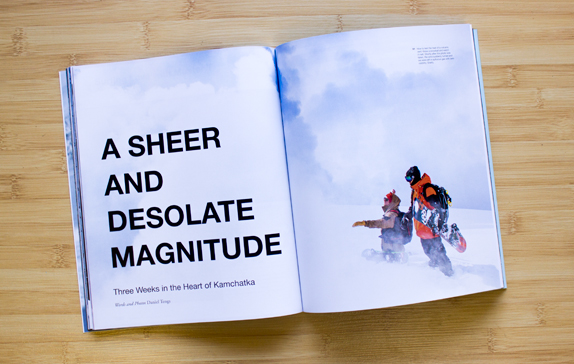Kamchatka
On Russia’s Kamchatka Peninsula, where the North Pacific meets the Bering Sea, exists a land of sheer and desolate magnitude. Marco Feichtner and Fredrik Evensen spend three weeks in a mountain hideaway where 15,000-foot plus volcanoes drain into Arctic waters on the eastern edge of the largest country in the world.
…Arriving in Petropavlovsk, the plane banked through towering, snow-caked volcanoes, coursing out over the Pacific Ocean in a victory turn, then landing outside the city center. During the cold war, the area was a hub for the Russian Pacific fleet and the airport still carried signs of Soviet military might. Bunkers lined the taxiway housing MIG fighters and hulking army helicopters, seemingly ready to go on a moments notice. We disembarked from the plane onto the tarmac and it felt like walking into hell—into an abandoned and forlorn city. But the run-down urban environment belied a land of stark beauty. Once we were past the delapidated buildings, past the crumbling remnants of a bygone era, the wilderness revealed a land like no other. Active volcanoes reach over 15,000 feet. Wildlife is abundant, and fishing dominates the economic activity of the area. The Kamchatkan Peninsula is home to a cluster of UNESCO world heritage sites centered upon the unique co-existence of volcanic and glacial activity, and the area is home to the world’s largest known salmonoid species as well as high concentration of sea otters, brown bears, and Stellar’s sea eagles. The geographic abundance of Kamchatka paints a unique picture: white trees against blue skies, strange-but-friendly people hardened by a frontier existence…
